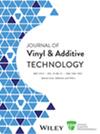A perspective on additives for flexible packaging
Abstract
Additives have been critical to the growth of flexible packaging since its inception nearly 100 years ago. Additives help tailor the performance of new materials to meet packaging needs and to efficiently run on film converting and packaging equipment. Examples include antioxidants for thermo-oxidative stability during extrusion, slip and antiblock agents to improve film handling and frictional properties, polymer process aides (PPAs) to delay the onset of flow instabilities and increase output, pigments for coloring films and creating light barrier, antifog agents to improve wetting of film surfaces, antistat agents to reduce static charge, and nucleating agents for increasing the rate of crystallization and controlling crystalline morphology. This paper provides a brief history of the development and use of additives in flexible packaging, focusing on polyolefins. It then looks forward at new challenges and opportunities for additive development. One area is regulatory driven, most recently replacing per-and polyfluoroalkyl substances (PFAS)-containing PPAs with non-PFAS technology. The industry has had to respond very rapidly to changing regulations and introduce new technology. The challenge is understanding the impact of the new technology on performance. A second area is sustainability where additives will be critical for upgrading the performance of mechanically recycled post-consumer packaging waste, redesigning flexible packaging structures so that they can be recycled in the PE-stream, and using bio-based or compostable polymers. New research methods such as high throughput experimentation, artificial intelligence and computer modeling and simulation will likely accelerate additive development in the future.
Highlights
- Additives are critical for meeting flexible packaging performance needs.
- Additives improve surface and bulk properties and processability.
- Replacing PFAS-containing process aides is a current area of focus.
- Sustainability is driving new opportunities for additive development.
- New research tools will help accelerate additive development.


 求助内容:
求助内容: 应助结果提醒方式:
应助结果提醒方式:


